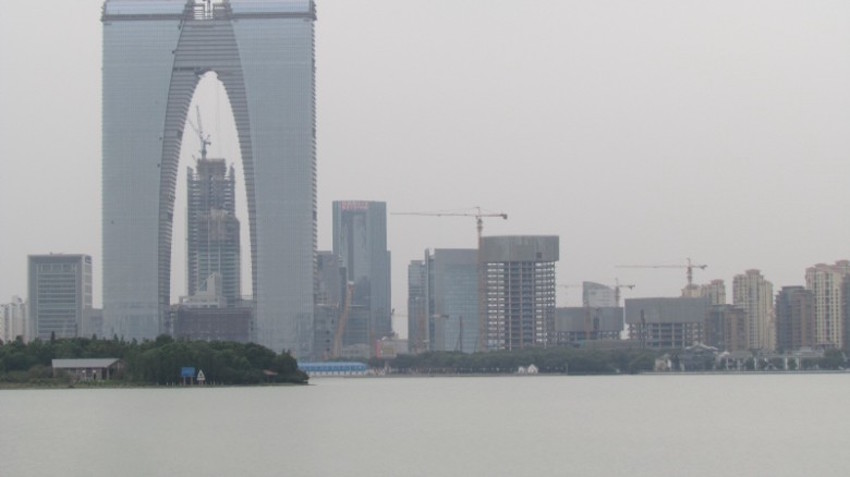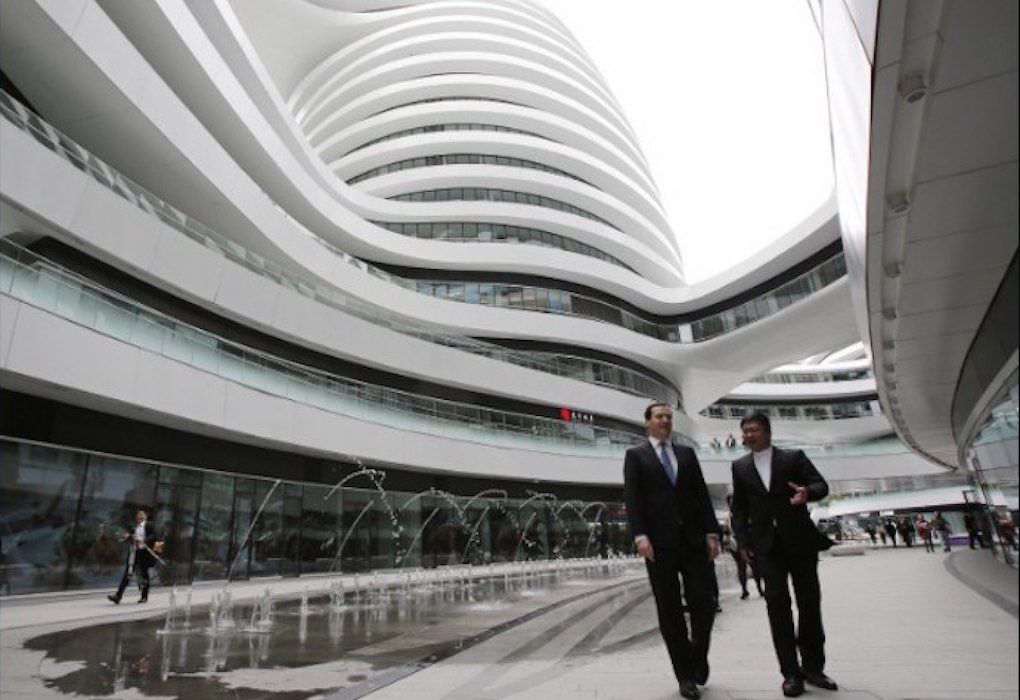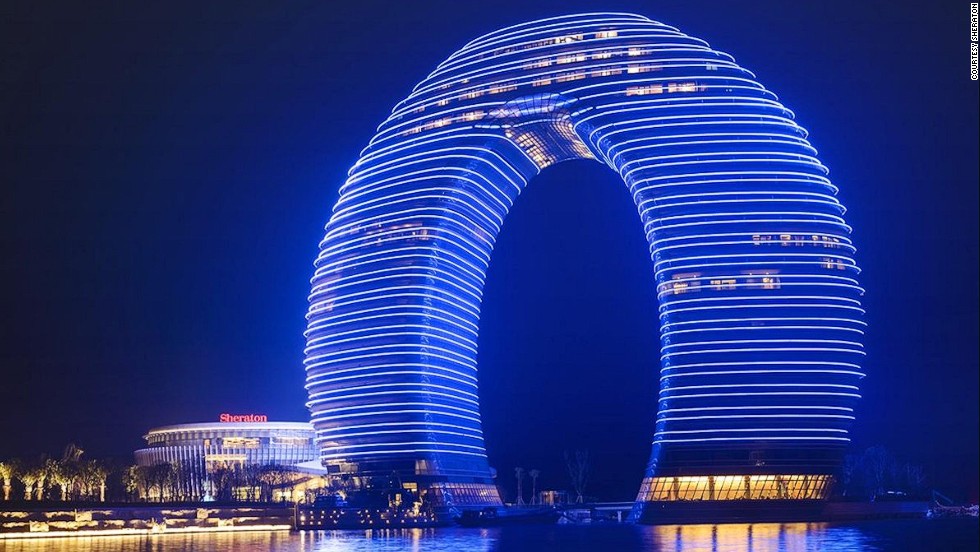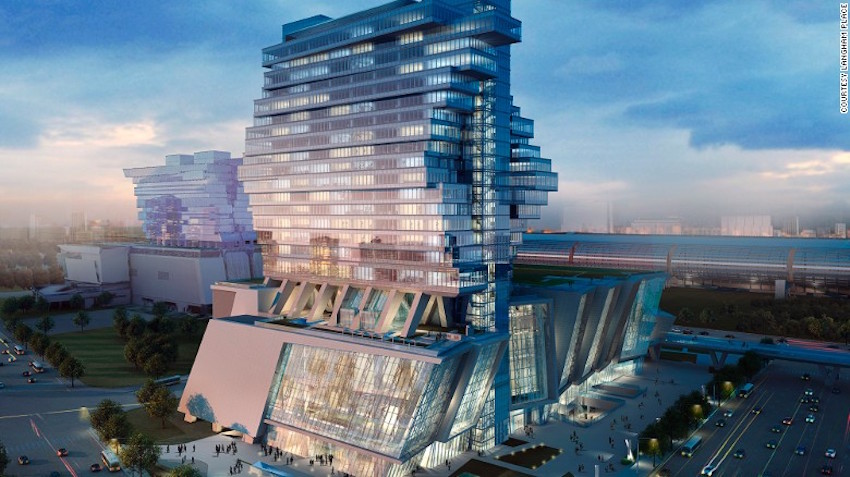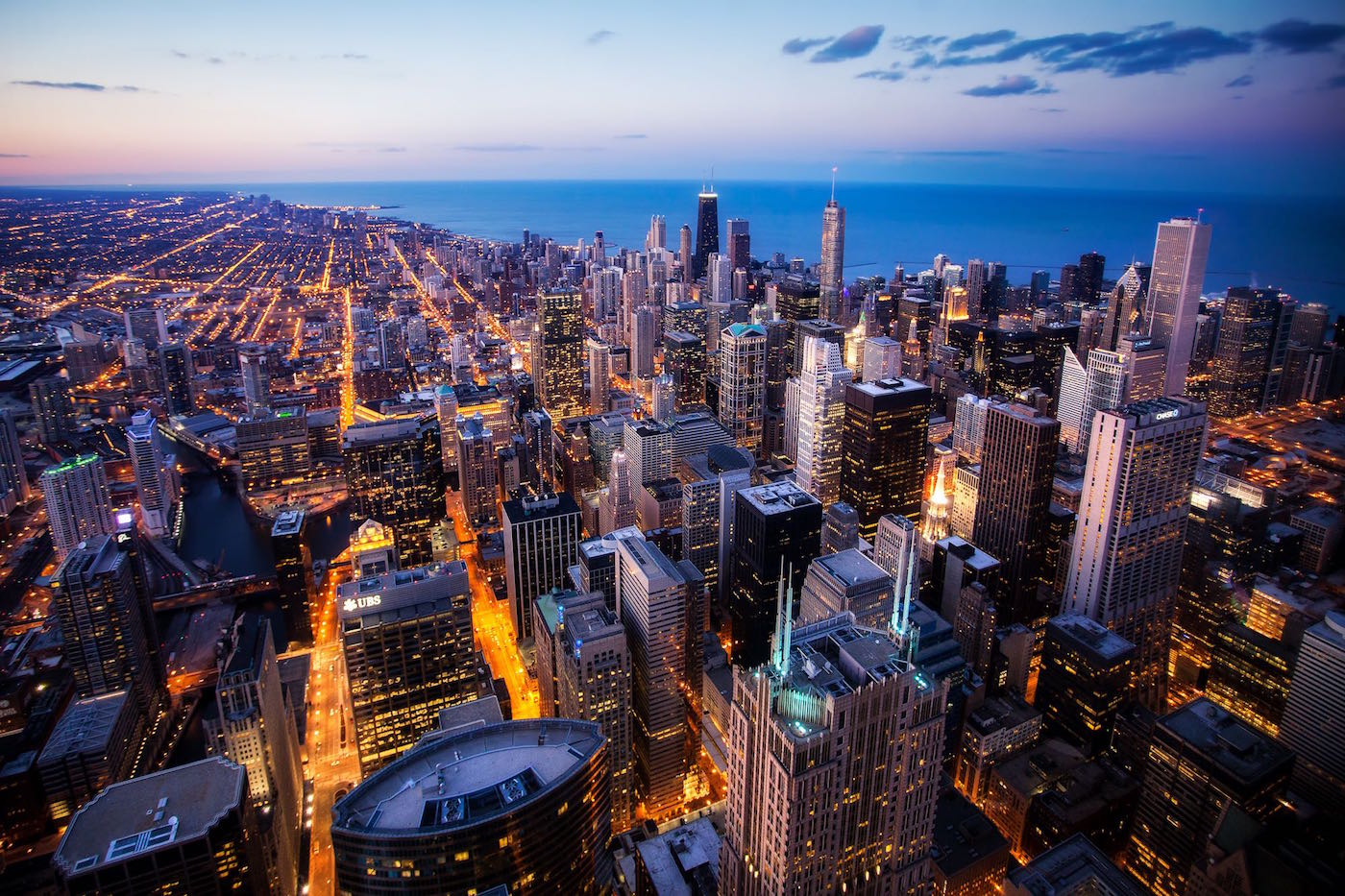China is no stranger to contemporary architecture that boggles the mind or appears to side-step common sense, from an LED-lit horseshoe in Huzhou to a glowing teapot in Wuxi. But in 2016, China’s State Council released guidelines forbidding the construction of “bizarre” and “odd-shaped” buildings lacking character or cultural heritage, shifting their focus to the “economic, green and beautiful.”
Liuzhou Forest City in Liuzhou, China
China’s first Forest City could help the country tackle its air pollution problem.
“(This is) the first experiment of the urban environment that’s really trying to find a balance with nature,” firm principal Stefano Boeri said on the phone from Milan.
The plant life is expected to absorb almost 10,000 tons of carbon dioxide and 57 tons of pollutants per year, and produce 900 tons of oxygen a year, while also decreasing the air temperature and providing a new habitat for displaced wildlife. Solar panels on the roofs will collect renewable energy to power the buildings, while geothermal energy will power air-conditioning, adding to the project’s green appeal.
From our partners:
Underneath the trees, the building’s curvilinear shape will channel what Boeri calls the “poetics of architecture” to become “a place where nature is flowing.”
Is this the end of ambitious Chinese architecture?

For years, China has been an architect’s playground, with lucrative funding and interest in foreign ‘starchitects’ giving rise to imaginative buildings. In 2016, China’s State Counceil released new urban planning guidelines. According to the document, “odd-shaped’ buildings” — or “bizarre architecture that is not economical, function, aesthetically pleasing or environmentally friendly” would be forbidden in the future. The document follows a 2014 cal by Chinese President Xi Jinping for less “weird architecture” to be built.
Chinese architecture: Spectacular, or weird?
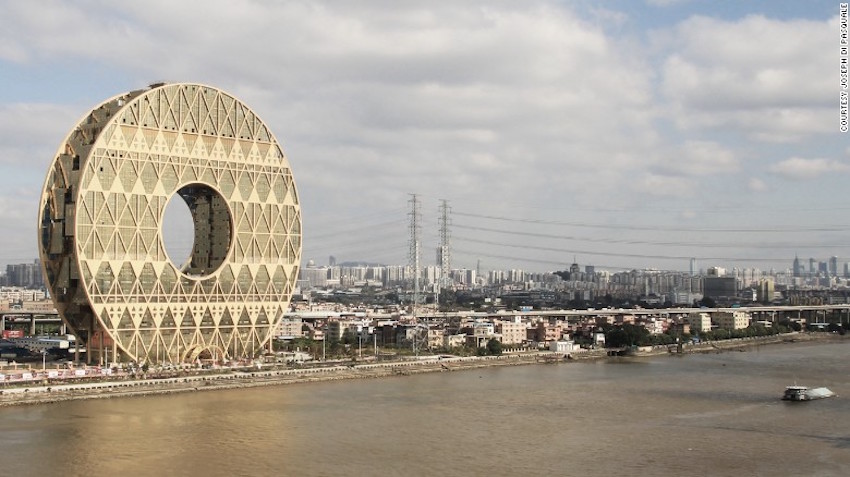
Memorable architectural designs, already built in China, include the Guangzhou Circle, home to the Guangdong Plastic Exchange. According to Italian architecture frim A.M. Progetti, the design is inspired by ancient jade discs.
Chinese architecture: Spectacular, or weird?
The CCTV headquarters, located in Beijing, was design by OMA. It’s nicknamed “big pants” by locals for its resemblance to trousers.
Is this the end of ambitious Chinese architecture?
The building opened in 2008 in Beijing’s Central Business District.
Chinese architecture: Spectacular, or weird?
Beijing residents poked fun at The People’s Daily Headquarters in Beijing while it was under construction. A doctored photo of the phalic building, superimposed under the CCTV ‘pants’ building, went viral on the internet before censors removed the images.
Is this the end of ambitious Chinese architecture?
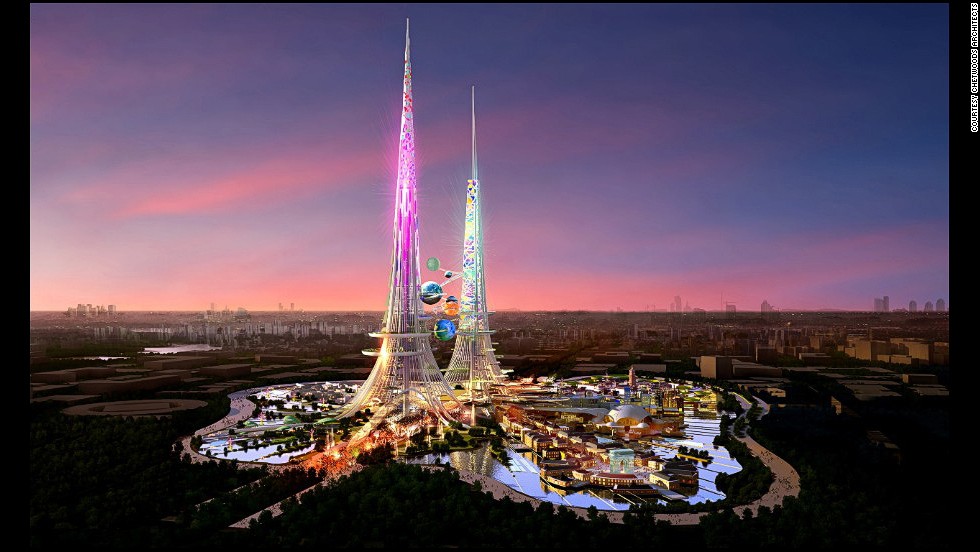
The Phoenix Towers are planned for construction in Wuhan, the capital of Hubei province. The towers will be one kilometer high, and are scheduled for completion by 2017 or 2018.
Chinese architecture: Spectacular, or weird?
The Gate of the Orient in Suzhou, Jiangsu province, stands more than 300 meter tall and has been compared to a pair of long johns.
Chinese architecture: Spectacular, or weird?

The Sunrise Kempinski Hotel on Beijing’s Yanqi Lake has a private marina and is lit up by hydroelectric-powered LED lights.
Is this the end of ambitious Chinese architecture?

This building, by Zaha Hadid Architects, is the fifth hotel tower of Macau’s sprawling City of Dreams complex. It is meant to evoke an abstract lucky number 8.
Chinese architecture: Spectacular, or weird?
Zaha Hadid Architects also built the Galaxy SOHO building in Beijing.
Is this the end of ambitious Chinese architecture?
Zaha Hadid’s signature style has been imitated in other province in the country. This building in China’s Chongqing district has a striking resemblance to architecture’s work.
Chinese architecture: Spectacular, or weird?
A horseshoe may be seen as lucky for some and comedic fodder for others. The $1.5 billion Sheraton in Huzhou, Zhejiang province is famed for its unusual design. The area was also the location for scenes from Oscar-winning movie “Crouching Tiger, Hidden Dragon.”
Is this the end of ambitious Chinese architecture?
Opened in 2013, Langham Place’s exterior is designed to resemblance unfolding wings in action, “evoking a sense of freedom and space,” according to a hotel spokesperson. It also has Guangzhou’s biggest ballroom.
Chinese architecture: Spectacular, or weird?
The city of Ordos is commonly referred to as a “Ghost Town” due to its lack of people. Here is a view of the City Library and the Ordos Museum building.
“We’ve seen what’s happening (in terms of pollution) in Beijing and Shanghai, but at the same time, China has to create to cities” to accommodate the population, he said. Indeed, the Chinese government announced last year that it planned to move two million people from remote villages into cities by 2020 in an attempt to alleviate rural poverty, and as a show of modernization.
But while the Liuzhou Municipality Urban Planning Bureau has approved the plan, the project’s completion is a long way off. Construction is set to begin in 2020, Boeri said there is still a lot of planning and research required before a projected completion date can be set. He remains, however, optimistic about the project, and confident in its aim.
“I really think that bringing forests into the city is a way to reduce climate change,” he said.











